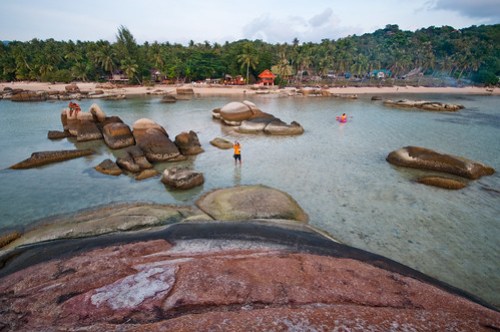I’m not an expert on economic matters, so please excuse any inaccuracies in this post.
The 90s decade in Japan went down in history as “The Lost Decade”, referring to the practically non-existent economic growth during those years. United States has just come out from a very similar decade (from 2000 to 2009) to “The Lost Decade” of Japan. The Dow Jones stock market index entered the year 2000 at 11,522 points and has finished the decade at 10,428; it didn’t grow even taking into account the inflation. It is very difficult to find any parallelisms between Japan in the 90s and United States in the 2000s, but I was curious about finding the similarities between the lost decades of the two biggest economies in the world (until China surpasses Japan during this year) and present them in a table. I know that comparisons are odious and if you try hard you can find similarities between almost anything you are comparing; however it’s still interesting to see.
|
Japan 1990 ~ 2000 |
United States 2000 ~ 2010 |
| Stock Market |
Nikkei, negative growth around -56% |
Dow Jones , growth around 0% |
| Bubbles |
Japanese bubble at the end of the 80s and beginning of the 90s |
dot-com bubble and housing bubble |
| Terrorist attacks and natural disasters |
Sarin gas attack on the Tokyo subway
and Hanshin earthquake in Kobe |
9/11 and Hurricane Katrina |
| GDP |
Absolute Growth of 24.7% |
Absolute Growth of 27.2% |
| Remarcable bankruptcies |
The Long-Term Credit Bank of Japan |
Lehman Brothers |
Job creation |
Unemployment growth |
Unemployment growth |
Although there are some similarities, the outlooks are totally different. In United States, the Federal Reserve took a lot of extreme measures trying to use the lessons learned from the Japanese crisis of the 90s. The poor Japanese have learned through trial and error. In the Western world we can see what happened in Japan and somehow act consequently. In United States they have been more agile trying to prop up the liquidity of banks through fiscal stimulus to combat the collapse of the demand of the private sector. They were also faster than the Bank of Japan at lowering the interest rates as much as possible so the credit keeps flowing into the system. Japan was more strict and they let many more companies and banks go under. On one hand, this is good up until we have been able to see at the moment, while on the other hand the future looks kind of grim because we are in a unique situation in history where the amount of money flowing in the world has grown at the fastest rate ever. The Western world finds itself in a totally unknown terrain,this is a situation that Japan didn’t have to go through.
Japan didn’t know how to deal with the continuous crisis and some people are already talking about “The Two Lost Decades”. In December 29th of 1989 the Nikkei stock exchange index peaked at its maximum historic level of 38,916 points, last Friday the Nikkei index closed at 10,123 points (a 73% fall in 20 years!) The GDP is right at the same levels of 1992. In 20 years, the unemployment has grown to reach 5% (practically unseen levels in Japan), today is not easy to find a job in Japan when in the past there were plenty of job opportunities. 80% of job contracts in the 90s were indefinite, in 2009 they represent only 61%. A beer in a bar in Tokyo used to be 500 yen in 1989, nowadays it still costs 500 yen and in some places even cheaper. The Japanese debt is approaching the 200% of the GDP. Land prices in urban areas have fallen 66%. We are talking about two lost decades, the Japanese people have lost all their confidence in themselves; before they saw themselves as a very strong country in the international context, now they don’t have many expectations about the future of Japan, they are quite pessimistic. However, on the other hand, the internal consumption is quite healthy in spite of the crisis and in fact, if you ask around, most of the Japanese people have never felt that “they were on a crisis”. Moreover, Japan is still a production, exportation and innovation monster. While at the same time has a lot of money saved. Not everything is bad.
In Japan, the money flow was stopped too early (in response to false recovery signs) before the demand was strong enough to keep a sustainable recovery, that’s why we have gone through 20 years of deflation and continuous crisis. That is maybe the best lesson about Japan that the Western world can take into account nowadays: don’t stop the money flow too soon and help the economy recover until demand and consumption catch up and go back to normality. Will the United States have two lost decades? I hope not, and I hope they are more agile than Japan in putting the economy back on track.
Other posts about the Japanese economy:



















